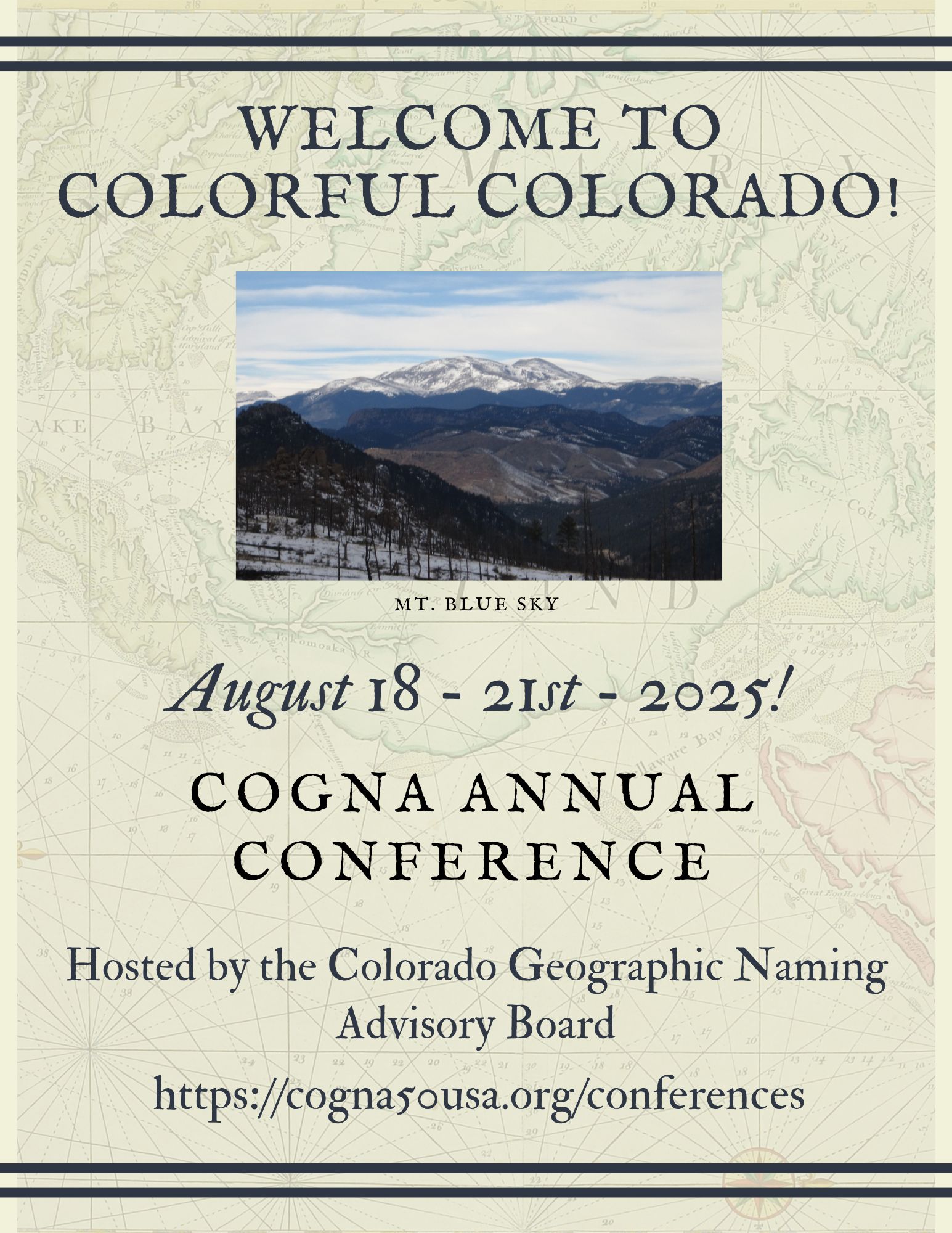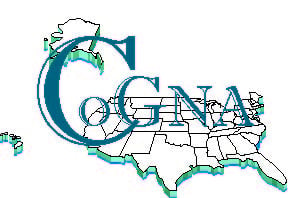Helpful Information for SNAs
| |
Reference Information

The below information is for reference information only. Information that might be useful as guidance for SNAs in reorganization, research, comparisons, general information, and more.
| |
| |

The below information is for reference information only. Information that might be useful as guidance for SNAs in reorganization, research, comparisons, general information, and more.
| |

Documents in this section are posted for help with various support tasks, operational functions, and more.

Documents in this section are samples of organizational structures of various states and any updates or relevant discussions pertaining to these.

Publications listed here are suggested reading for SNAs by other SNAs - or anyone interested in place names and place name management.
Books:
Basśo, K. H. (2010). Wisdom sits in places: Landscape and language among the western apache. Univ. of New Mexico Press.
Monmonier, M. (2008). From Squaw Tit to Whorehouse Meadow: How Maps Name, Claim, and Inflame. University of Chicago Press.
Stewart, G. R., & Weiland, M. (2008). Names on the land: A historical account of place-naming in the United States. New York Review Books.
Articles:
Alderman, D.H. (2013). Street naming and the politics of belonging: Spatial injustices in the toponymic commemoration of Martin Luther King Jr. Social & Cultural Geography, 4 (2), 211-233.

 REGISTER HERE
REGISTER HERE HERE
HEREMore information on this Year's Annual  Conference Information is posted on the Conference Page (tab also in upper right of this page)
Conference Information is posted on the Conference Page (tab also in upper right of this page)
See all tabs above for more specific information

History and Information about the Council on Geographic Names Authorities (CoGNA)
The Council of Geographic Names Authorities (CoGNA) is an association of state and federal government agencies representing the official and recognized geographic names authorities in the United States who work to promote national standardization of the names of geographic features for official use throughout the country. The goal of national standardization is sought through cooperation among federal and state agencies that have responsibilities for administering names of geographic features and cultural entities as mandated by the United States Board on Geographic Names (USBGN). Standardization is important to eliminate confusion, uncertainty, and misunderstanding which may occur when more than one name is used for the same place or feature, when the same name is applied to different features, or the spelling of a name is inconsistent. The end result is incalculable savings in time and money by increasing the efficiency of our nation’s government, state governments, city governments and other institutions. It can prevent misunderstanding, and just as important, can eliminate the inconsistency that occurs when different agencies try to determine geographic name use. National standardization also allows a country to exercise its prerogative to establish its own standard names.
This process started in the United States in 1890 when President Benjamin Harrison signed an Executive Order creating the United States Board on Geographic Names. The authority of the Board was expanded by Public Law 242—80 of the 80th Congress: Chapter 330—1st Session; S. 1262, 1947. Although the USBGN has the final authority on approving geographic names for official use for all agencies of the federal government the input of state, local governments and ordinary citizens has great influence over its decisions. The process cannot be carried out unilaterally or arbitrarily because the subject touches the daily lives of all citizens. The use of geographic names is interwoven into the fabric of society—language, tradition, and long-standing records. Establishing standardized name usage is a process that requires sensitivity to public interest, accomplished by close communication and cooperation between various levels of government and the citizens they represent. Decisions of the USBGN are contained in the Geographic Names Information System (GNIS) where all of the official names for federal use can be found. A great majority of these names are those that have been in long-term use by the public. The public is encouraged to submit name changes and new names for unnamed features for consideration as official names. See the Authorities page for a representative in your state to assist you with name proposals.
The Council of Geographic Names Authorities was established to provide a dependable planning and training mechanism through its annual conferences, to carry out certain work directed by its members, and to provide a central office for the purpose of communication. The principal business of CoGNA is conducted at annual conferences attended by members and other interested persons from throughout the United States. Persons involved in geographic name activities in other countries also attend. Any person interested in any aspect of geographic names are encouraged to attend and participate in the annual conferences.
The expenses of CoGNA and its annual conference are met by income from conference fees, contributions, gifts, royalties, and/or grants from interested individuals or organizations. It is our goal to have a representative from each State Geographic Names Authority attend the annual conference. Unfortunately, many States are unable to send a representative due to budget restraints. In our efforts to meet our goals, CoGNA seeks help from grantors and contributors to assist in providing funds, thus enabling representatives who need assistance to attend. CoGNA has no paid employees; all funds are used for meeting our goals. All donations are tax deductible as defined by the IRS regulations.
The Council of Geographic Names Authorities is a non-profit organization recognized as a 509 (a) (2) under section 501 (c) (3) of the Internal Revenue Service (IRS) tax code.
For additional history and an overview of CoGNA conferences see Conferences
Our Constitution and Bylaws can be found in Founding Documents